365 Urban Species. #256: Greater Angle-winged Katydid. #257: Red-legged Grasshopper
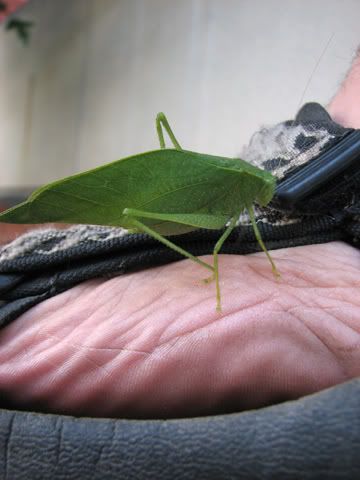
Photos by cottonmanifesto. Location Brookline Ave and Francis Street, Boston.
Urban species #256: Greater angle-winged katydid Microcentrum rhombifolium
Tick tick tick tick tick tick ticktickticktickticktick!
This is the sound of an insect that was mysterious to me for a long time. It ticked away, slowly first, then faster and urgently, like a timer on an explosive. It was hidden in high vegetation, way up in trees and in the ivy up by our second-floor windows. I assumed it was a beetle, perhaps a death watch beetle, whatever that is, ticking away, reminding us of our limited time left on earth. As it turns out, a friend of mine in Somerville (the most densely populated city in the U.S., a little city across the river from Boston) managed to follow the sound to its source, and found something much more benign. The greater angle-winged katydid makes his ticking call, like all noisy male animals, to announce his presence to potential mates. The loud song is important, because these insects are incredibly well-camouflaged: flattened like a leaf, and including details like wing veins that look like leaf veins. I still wonder how it is that the great golden digger wasp is able to locate katydids to provision her nest, since the wasp is active during the day, and the katydids sing at night. There are six species of angle-winged katydids, and the best authority I could find on the subject omitted New England from their range maps. It is possible that they have newly spread to eastern urban areas in ornamental plantings from further west. "True" katydids, the ones that sing their names, make up a small subfamily of the family Tettigoniidae ("long horned" grasshoppers: those grasshoppers that have antennae as long as their bodies). The greater angle-winged katydid is the only long-horned grasshopper that I have encountered in the city so far.
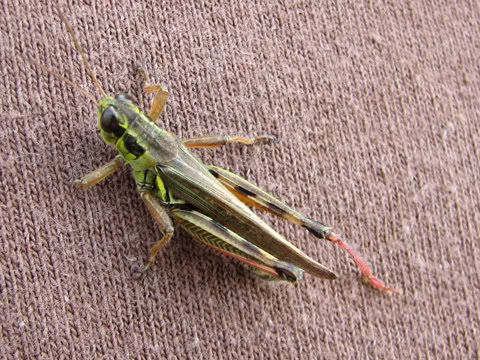
Location: Puddingstone Park, Mission Hill, Boston.
Urban species #257: Red-legged grasshopper Melanoplus femur-rubrum
If you walk through a grassy field, or a vacant lot choked with weeds, chances are you will stir up grasshoppers. Chances are very good that one of the species you stir up will be the red-legged grasshopper. This "short-horned" grasshopper (it's antennae are considerably shorter than the length of its body) is one of the most widely distributed grasshoppers in North America. It is found nearly everywhere in Canada and the United States and in the northern half of Mexico. It feeds on a variety of different plants, including common urban species such as Russian thistle (tumbleweed), fleabane, vetch, ragweed, and many different grasses. All of these plants are prevalent in areas that are infrequently but regularly mowed, like roadsides. Grasshoppers are important prey for many different animals, especially birds, including large species such as turkeys, herons, and birds of prey (even large hawks such as the red-tailed hawk.
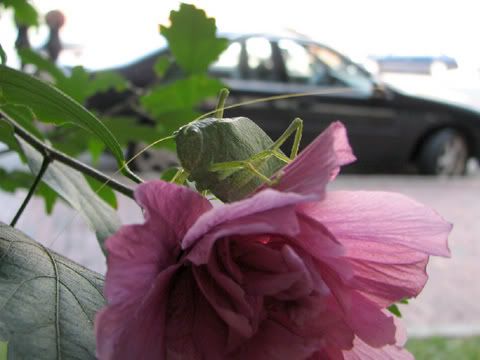
This katydid alerted us to his presence by uncharacteristically singing in the morning.
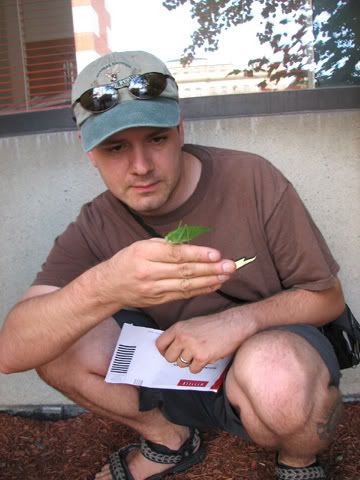
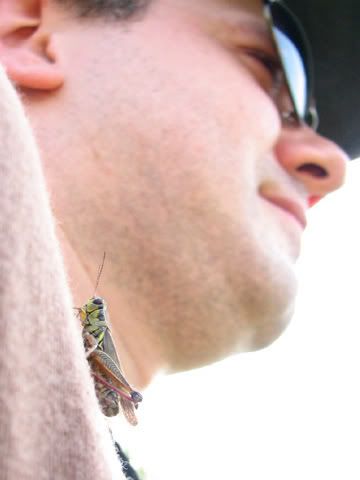
To most insects, humans are nothing more than terrain.